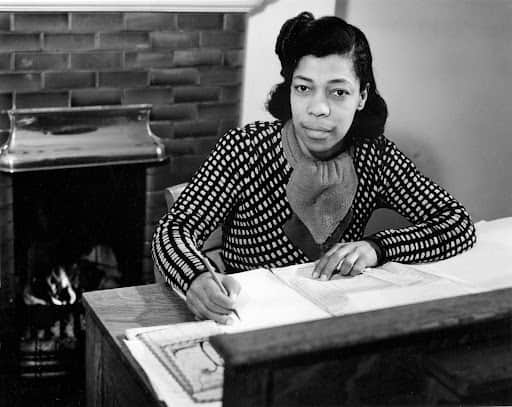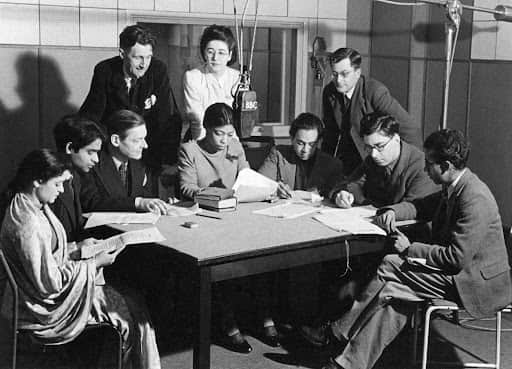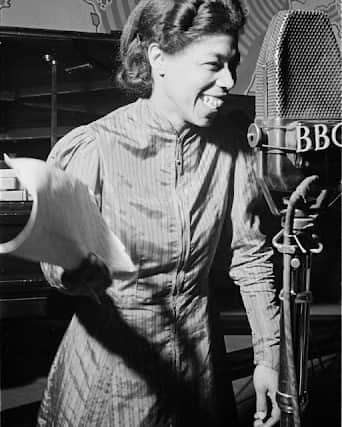Una Marson: what poems and books did she write as Jamaican broadcaster celebrated with Google Doodle
and live on Freeview channel 276
The iconic Google Doodle is known for changing up the Google logo to celebrate cultural events, holidays, important dates and the lives and legacies of famous artists, activists, pioneers and more.
Today, Sunday 10 October, the doodle is honouring Una Marson, the first Black woman to be employed as a radio producer at the BBC.
This is everything you need to know.
Who is Una Marson?
Advertisement
Hide AdAdvertisement
Hide AdUna Marson was a Jamaican writer, feminist, advocate and broadcaster.
She was born on 6 February 1905 in Santa Cruz, Jamaica, to Baptist parson father Reverend Solomon Isaac Marson and mother Ada Wilhelmia Mullins.
At age 21, she was the assistant editor of the monthly Jamaica Critic, and she became the first female magazine publisher and editor in Jamaica in 1928, when she established The Cosmopolitan, which was a publication that focused on topics like gender issues and social injustice.
Marson also published Jamaican poets, which at the time was rare even in national newspapers.
Advertisement
Hide AdAdvertisement
Hide AdShe published her first collection of poetry in 1930, called Tropic Reveries. Marson followed this up with what would become her best known collection, called Heights and Depths in 1931.
Marson moved to London in 1932, one of many anti-colonial activists and intellectuals who moved to the city at the time. During her first stay in London, between 1932 and 1936, she joined the League of Coloured Peoples, fighting for equal rights alongside the founder and fellow Caribbean immigrant Dr Harold Moody.
Marson returned to Jamaica in 1936, where she worked to cultivate a new generation of Jamaican voices. She published her third poetry collection in 1937, called The Moth and the Stars.
She also founded Jamaica’s Save the Children Fund, which was an organisation that aimed to raise money for children who could not afford to get a basic education.


Advertisement
Hide AdAdvertisement
Hide AdMarson returned to London in 1938 to continue the work of the Jamaican Save the Children project, and was brought on as staff for the Jamaican Standard. In 1941, she was hired by the BBC, where she worked with the likes of George Orwell, read her poetry alongside T.S Eliot and also produced a weekly program called Calling the West Indies.
First aired in 1943, Calling the West Indies featured poems and stories written by Caribbean authors, and allowed them to access an international platform. Calling the West Indies evolved into Caribbean Voices and ran from 1944 to 1958.
In 1945, Marson returned to Jamaica, and that year published her final volume of poems called Towards the Stars.
Not much is known about Marson’s later life, and unfortunately no trace of the autobiography she completed in 1937 survives. While not much is known about her personal life, Marson’s writing and contributions to the world of broadcasting has left behind an ever lasting legacy.
Advertisement
Hide AdAdvertisement
Hide AdMarson passed away at the age of 60 in 1965 after suffering from a heart attack.
In 2009, her achievements were honoured with the installation of a Blue Plaque, which celebrates individuals who have had great impacts on their communities and beyond, at her former home in Brunswick Park, London.
Why is 10 October significant?
During her time as a radio producer with the BBC, Marson recorded a number of significant interviews.


One of her most famous interviews was one with swing band icon Ken “Snakehips” Johnson, which took place on 10 October 1940.
What poems and books did she write?
Marson’s bibliography goes as follows:
- Tropic Reveries, poetry collection, 1930
- Heights and Depths, poetry collection, 1932
- At What a Price, play, 1933
- Moth and the Star, poetry collection, 1937
- London Calling, play, 1938
- Pocomania, play, 1938
- Towards the Stars, poetry collection, 1945
Advertisement
Hide AdAdvertisement
Hide AdIn 2011, Peepal Tree Press, a publisher based in Leeds which publishes Caribbean, Black British and South Asian fiction, non-fiction, poetry and drama, published a collection of selected poems by Marson, edited by Alison Donnell.


The summary for the collection reads: “Una Marson is widely recognised as ‘the earliest female poet of significance to emerge in West Indian literature’, but whilst her role as an early feminist and a ‘first woman’ publisher, broadcaster, pan-Africanist and anti-racist features on many web pages, her poetry has received less considered critical attention.”
What is the doodle?
The illustration features Marson in the centre of the Google logo. In front of her is an old style broadcasting microphone, with the Google letters emanating from it.
Behind her head is an illustration in black and white of a British street, with iconic double decker buses in the background.
Advertisement
Hide AdAdvertisement
Hide AdBy contrast, at her sides is a colourful Caribbean beach scene, with blue waters, green mountains, red flowers and a purple bird.
Who made the doodle?
The Google Doodle was illustrated by UK based artist Sarah Madden.
Speaking about the project, Madden said: “As a woman of Jamaican heritage, I feel so much joy and pride to shine a light on and celebrate Una Marson.”
Regarding her inspiration for the doodle, she said: “Una had many achievements. But this piece was inspired by a legacy she left in the UK broadcasting industry during the war.
Advertisement
Hide AdAdvertisement
Hide Ad“In 1932, Una travelled from Jamaica to London where she became the first black woman to be employed by the BBC. She then became a producer of the programme Calling the West Indies, where she amplified the voices of unsung West Indian heroes in the UK.
“The illustration heroes Una and depicts her mic as a window to the warm Caribbean from the chilly UK.”


Madden said that she hopes that more people will learn about Marson, and the role that she played in British history.
She said: “Despite the prejudice and racism she faced, she strived to follow her passions and built a career in journalism, broadcasting, entertainment and writing.
Advertisement
Hide AdAdvertisement
Hide Ad“I hope other women can learn about her and be as inspired by her as I am.”
Who else contributed to the doodle?
As well as being illustrated by Madden, the doodle was also created in collaboration with Dr Delia Jarrett-Macauley, biographer of Marson, the BBC, and Robert Seatter, head of BBC History.
Jarrett-Macauley said: “I’m so proud that Una Marson is being recognised through Sarah Madden’s beautiful Doodle.
“Una was a significant black female voice of the 20th century, advocating for Jamaica’s women and children and initiating the pioneering BBC programme "Caribbean Voices."
Advertisement
Hide AdAdvertisement
Hide Ad“I believe she would have been amazed to observe her accomplishments gaining wider recognition—students reading her poetry, companies reviving her plays—and I wish she could have seen this special acknowledgement of her lasting legacy.”
Seatter added: “Una Marson was a bold and brave pioneering voice in her brief time at the BBC in the 1940s.
“In producing the popular radio strand "Calling the West Indies," she created the seminal "Caribbean Voices," featuring poems and short stories by Caribbean authors, many of whom were little known at the time.
“She gave these voices a new and international platform, and the series would continue as her legacy until 1958.”
Advertisement
Hide AdAdvertisement
Hide AdA message from the editor: Thank you for reading. NationalWorld is a new national news brand, produced by a team of journalists, editors, video producers and designers who live and work across the UK. Find out more about who’s who in the team, and our editorial values. We want to start a community among our readers, so please follow us on Facebook, Twitter and Instagram, and keep the conversation going. You can also sign up to our newsletters and get a curated selection of our best reads to your inbox every day.
Comment Guidelines
National World encourages reader discussion on our stories. User feedback, insights and back-and-forth exchanges add a rich layer of context to reporting. Please review our Community Guidelines before commenting.
